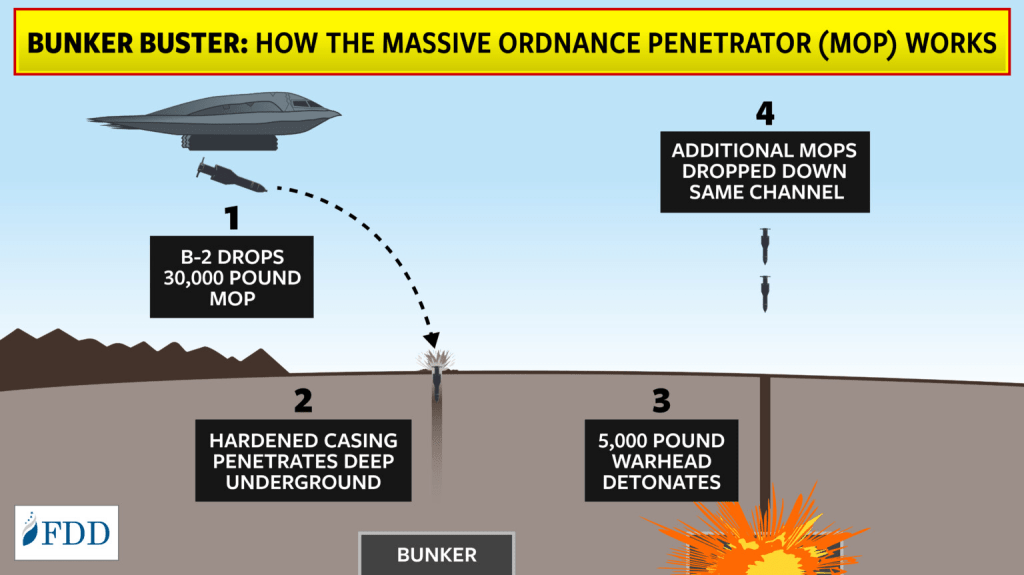In a dramatic military move, the United States has launched airstrikes on three of Iran’s nuclear facilities, with President Donald Trump claiming the sites have been “totally obliterated.”
The strikes, coordinated with Israel, have escalated already high tensions in the region and drawn global reactions ranging from concern to praise. Here’s a breakdown of everything unfolding.
Which Sites Were Targeted?
The US military struck three key nuclear facilities in Iran: Fordow, Natanz, and Isfahan.
- Fordow is a highly fortified uranium enrichment site hidden deep inside a mountain.
- Natanz has been central to Iran’s nuclear program for years.
- Isfahan houses important infrastructure used in uranium conversion.
These locations are crucial to Iran’s nuclear ambitions.


The Weapon: A Bomb Built for Bunkers
To strike deeply buried targets like Fordow, the US reportedly used the GBU-57 Massive Ordnance Penetrator (MOP), a 13,000kg bomb capable of cutting through thick concrete and layers of earth.
It’s designed specifically for hardened underground facilities, and while not guaranteed to completely destroy Fordow, it’s the only bomb with a shot at doing serious damage.
US media outlets suggest that MOPs were indeed used in the operation.


Were the Strikes Successful?
President Trump said the attacks had “completely and totally obliterated” Iran’s nuclear enrichment capabilities.
But Iranian officials quickly pushed back. An Iranian lawmaker claimed that the damage to Fordow’s nuclear site was superficial, and not to the facility itself. The state-run IRNA news agency said the sites had been evacuated ahead of time and that no sensitive nuclear materials were present during the strike.
So far, no radiation leaks have been reported, and the International Atomic Energy Agency (IAEA) confirmed that radiation levels remain normal at all three sites.


Iran Responds: Warnings and Legal Threats
Iranian leaders have condemned the airstrikes as illegal and provocative.
Iran’s Foreign Minister has condemned the US strikes on what he described as “peaceful nuclear installations,” calling the attacks “outrageous” and warning that “Iran reserves all options to defend its sovereignty”.
One senior lawmaker even suggested that Iran could withdraw from the Nuclear Non-Proliferation Treaty (NPT), a global pact aimed at stopping the spread of nuclear weapons.
Article 10 of the treaty allows for withdrawal if a country’s national interests are seriously threatened.


Israel Shows Support and the UN Calls for De-Escalation
International response has been mixed. Israel’s Prime Minister Benjamin Netanyahu congratulated Trump for taking “bold” action, saying, “History will record that President Trump acted to deny the world’s most dangerous regime, the world’s most dangerous weapons.”
Meanwhile, UN Secretary-General António Guterres expressed deep concern, calling the strikes a dangerous escalation that risks spiraling out of control. He urged all sides to step back, saying diplomacy remains the only way forward.
What Comes Next?
President Trump didn’t hold back. In a follow-up statement, he warned that if Iran doesn’t agree to a diplomatic solution, future attacks will be “far greater.” He ended with a stark message: “There are many targets left.”
Iran, meanwhile, insists it won’t back down. Iran’s foreign minister warned the US to expect “everlasting consequences.”
Both sides appear to be digging in, raising fears of more military action and further instability in the region.
The Bigger Picture
This moment is a turning point. Whether it leads to diplomacy or deeper conflict, the US airstrikes have pushed an already fragile situation to the edge. For now, the world watches—hoping that what comes next is not war, but a path back to peace.
WE SAID THIS: Don’t Miss…What’s Happening Between Iran and Israel? Here’s a Breakdown of the Escalation



